
Does your low back twinge? Do your feet pop when you stand on your toes? Do you struggle to look behind you in your car to see what’s rolling around clanking? And do you think to yourself, “I should start to do [more] yoga?
What’s stopping you?
Often times, its pre-conceived notions on what a yoga practice should look like. I’m here to tell you that you can throw all of that out the window. These 11 gentle poses – in a 10-min morning yoga practice (watch the video) – will get you to move your body in every way so you can move with more ease and with less pain throughout your day.
I’ve added links to previous blog posts and videos for more detail on how to do the poses, variations for muscular-skeletal conditions, and other ways to find more comfort in each pose. Read to the end to learn how to start a morning yoga practice or add yoga into an effortless daily routine.
Sign up for my newsletter and get my 1 min checklist to reduce stress, anxiety, and pain + guided audio.
Privacy is important. I won’t sell your info. I promise.
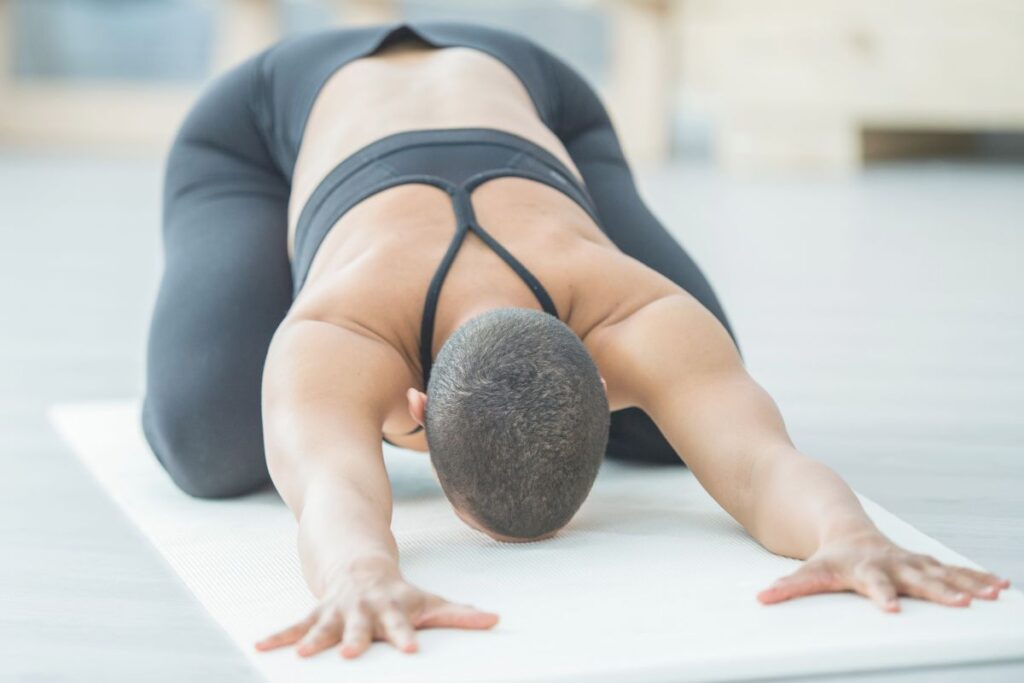
Start with shins on the ground tops of the feet to the floor, with tops of the toes to the floor or curled under. Forehead to the floor or place on stacked fists to support the head. Arms out in front of you, by your feet, or somewhere in between.
Take this time to notice your breath, feel the belly expand as you breathe in, and feel the belly contract as you breathe out. Hold for 5 to 10 breaths or as long as you would like.
Start on all 4s (tabletop) – knees under hips and wrists under shoulders. If there is discomfort in the wrists, try using fists as a support instead of hands flat on the ground. Tops of the feet flat to the floor or toes curled under.
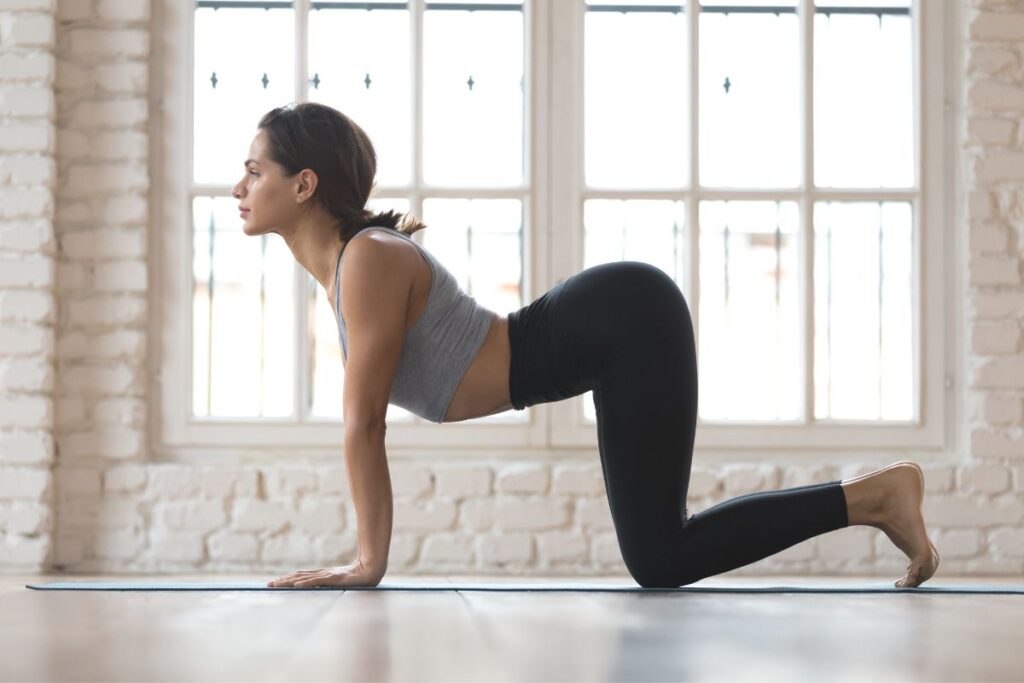
Inhale, turn your gaze forward, spread the collar bones wide (shoulders move away from one another), belly lowers, back arches, tail bone reaches up toward the ceiling.
*Contraindications – avoid this pose if you have osteoporosis or spondylolisthesis.
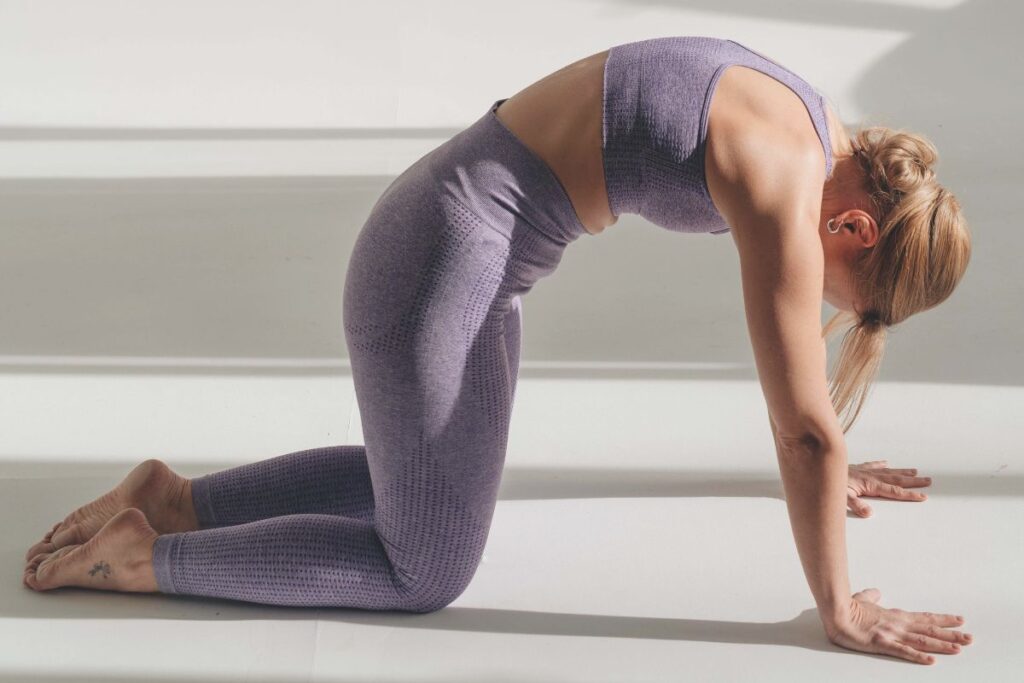
Exhale lower the head, round the back, reach the spine toward the ceiling, belly moves inward, tailbone draws down toward the floor.
*Contraindications – avoid this pose if you have herniated lumbar or cervical discs.
Alternate between Cat and Cow pose for a few rounds of breath. If you have any of the contraindications, move between tabletop and the pose that you can safely do.

Move with your breath from tabletop and draw the right hip and shoulder toward one another. Feel the right side abdominal muscles (obliques) engage. Move back to tabletop, then draw the left shoulder and hip toward one another, feel the left side obliques engage. Move back to tabletop. Continue to move with your breath for a few rounds.
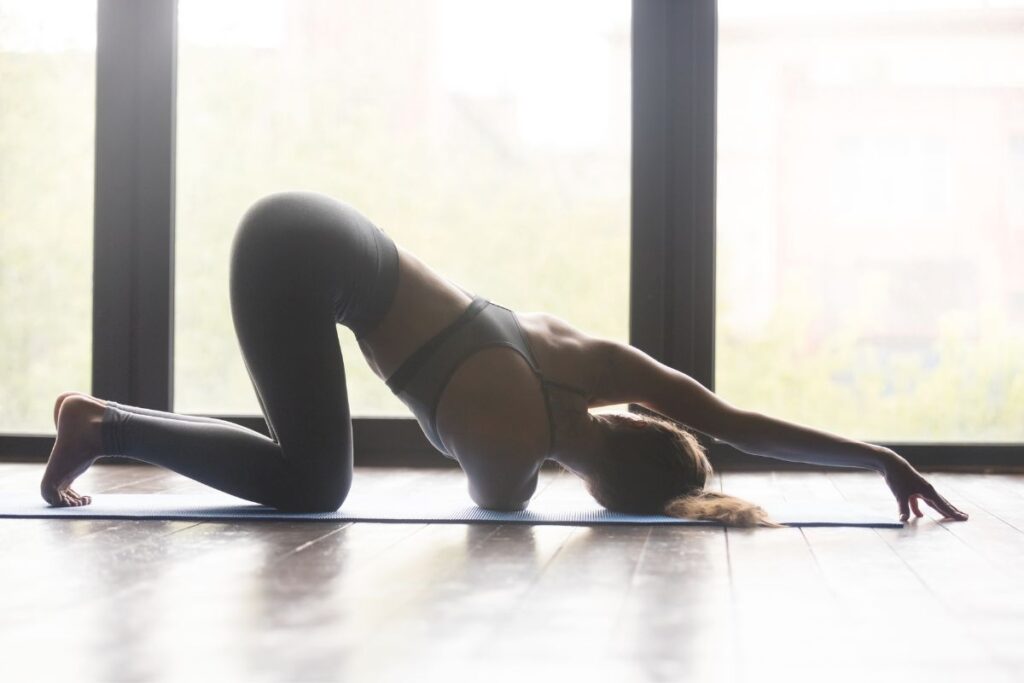
Start in tabletop and inhale the right arm up and out to the side (allow your torso and gaze to rotate with the arm). Exhale, thread the right arm under the left side of the body (between the arm and the leg), allow the right shoulder and ear to come to the floor. Hold for a few breaths.
Return to tabletop and inhale the left arm up and out to the side (allow your torso and gaze to rotate with the arm). Exhale thread the left arm under the right side of the body (between the arm and the leg), allow the left shoulder and ear to come to the floor. Hold for a few breaths, then return to tabletop.
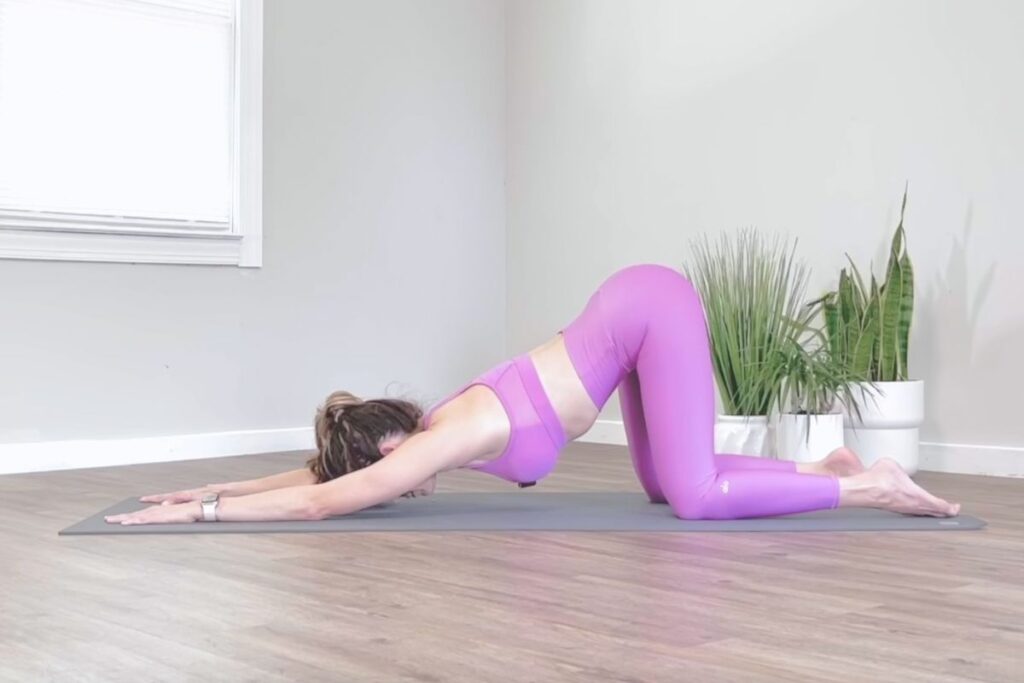
Start in tabletop, keep the hips above the knees, reach the arms out in front of you, and lower your forehead toward the floor. Hold this pose for a few breaths. If it feels comfortable and you want to deepen the stretch, slide further forward until the chest comes down to the ground with the hips stacked over the knees.
*Contraindications – avoid this pose if you have osteoporosis. Be mindful if you have spondelothisis but the stretch should be in the chest with the arch in the upper back and arms.
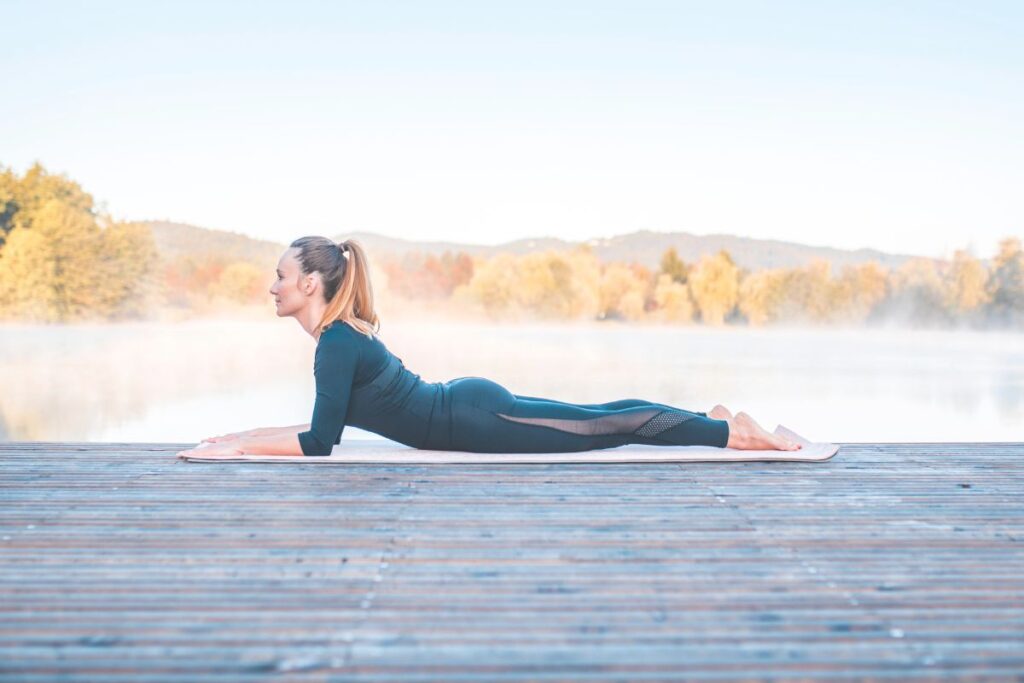
Lay prone (front side of the body on the floor), elbows underneath shoulders, forearms to the floor. Press the forearms down into the ground, lift the crown (top) of the head toward the ceiling, shoulders move away from the ears. Shoulder blades move toward each other and down the spine. The gaze is at the ground forward of the hands, so the back of the neck is long. It may feel as if the chin is tucked slightly.
*Avoid looking forward or up at the ceiling
**Contraindications – avoid this pose if you have osteoporosis or spondylolisthesis.
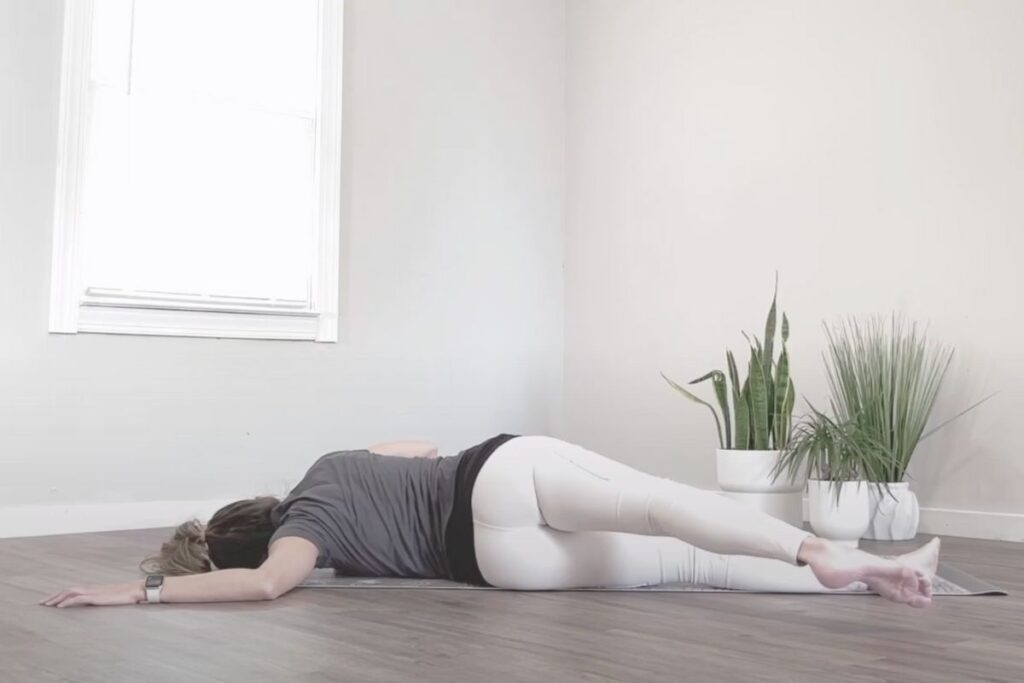
Lay prone, arms in cactus (arms straight out from the shoulder, elbows bent to 90 degrees), mindfully roll toward one side until sensation. Place legs, head, and opposite arm in any position that is comfortable and supportive. Hold for a few breaths, then move to the other side.
*Avoid this pose if you’ve had shoulder surgeries or injuries.
** Reading Break ** This blog post DOES contain affiliate links of related products I love and they might even be pictured. If you click on a link and purchase a product (or service) it costs you nothing, you MIGHT even get a discount, and I MAY even receive a SMALL commission. This helps me to buy and drink coffee ☕️ in order to keep me awake and provide you with amazing free content 💗 Thank You for supporting my content 💋
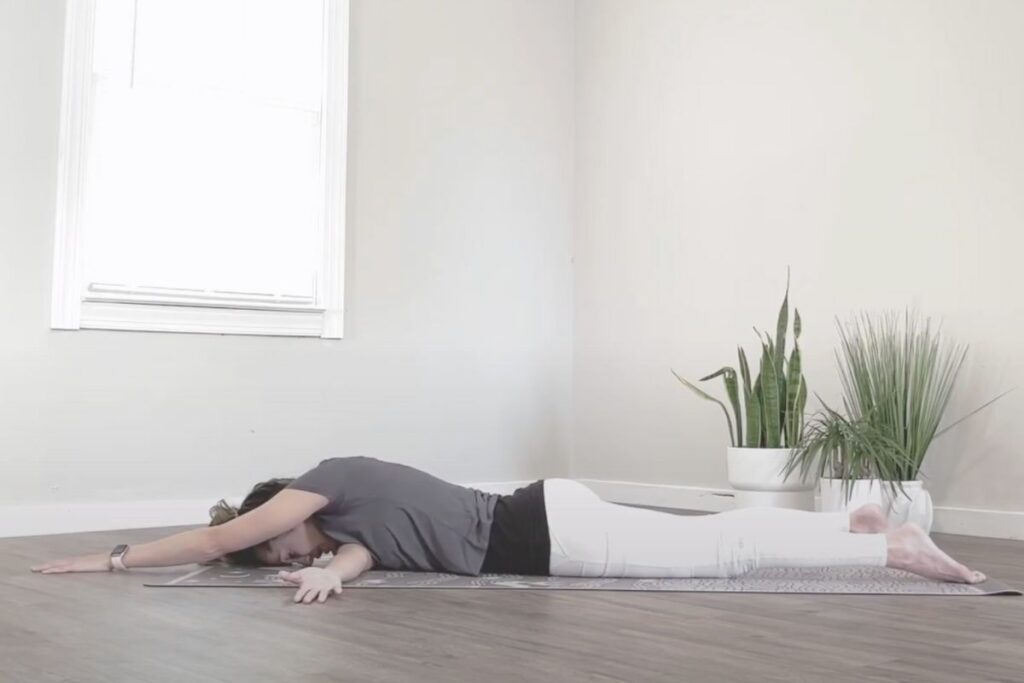
From prone, press the torso up enough to slide the right arm underneath the left with the palm flipped up toward the ceiling. Gently lower down and rest the head on the mat comfortably. Roll toward the extended arm for more sensation, and roll away for less.
*Avoid this pose if you’ve had shoulder surgeries or injuries, or do a seated variation.
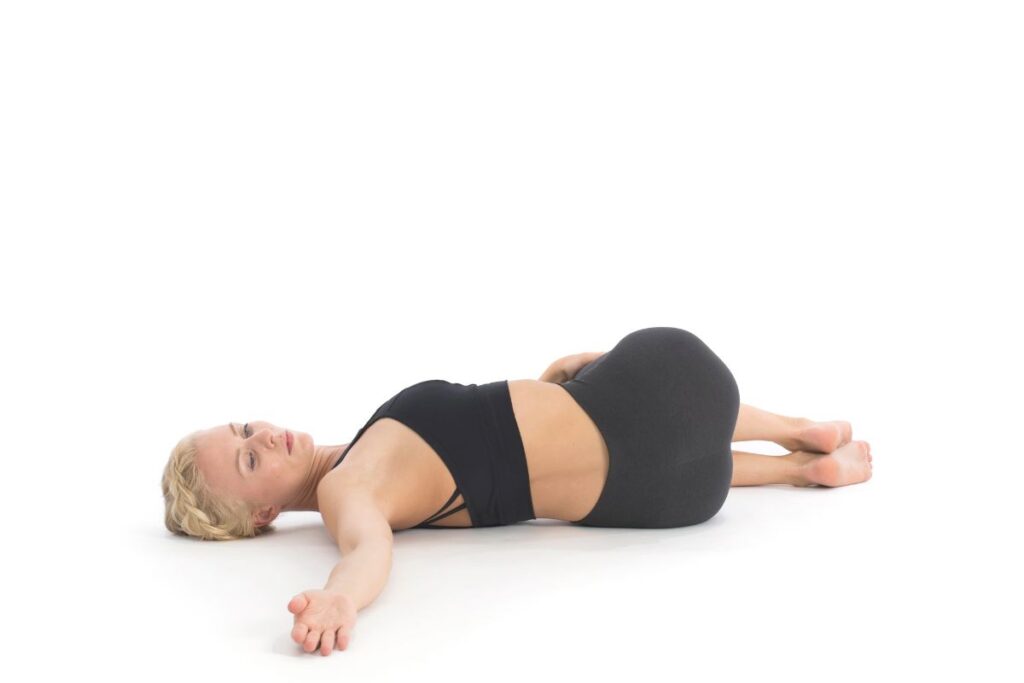
Start on the back (supine), tuck knees in toward the chest, draw knees to one side, the other arm can go out to a “T” or “cactus.” Hold for a few breaths, then do the other side.
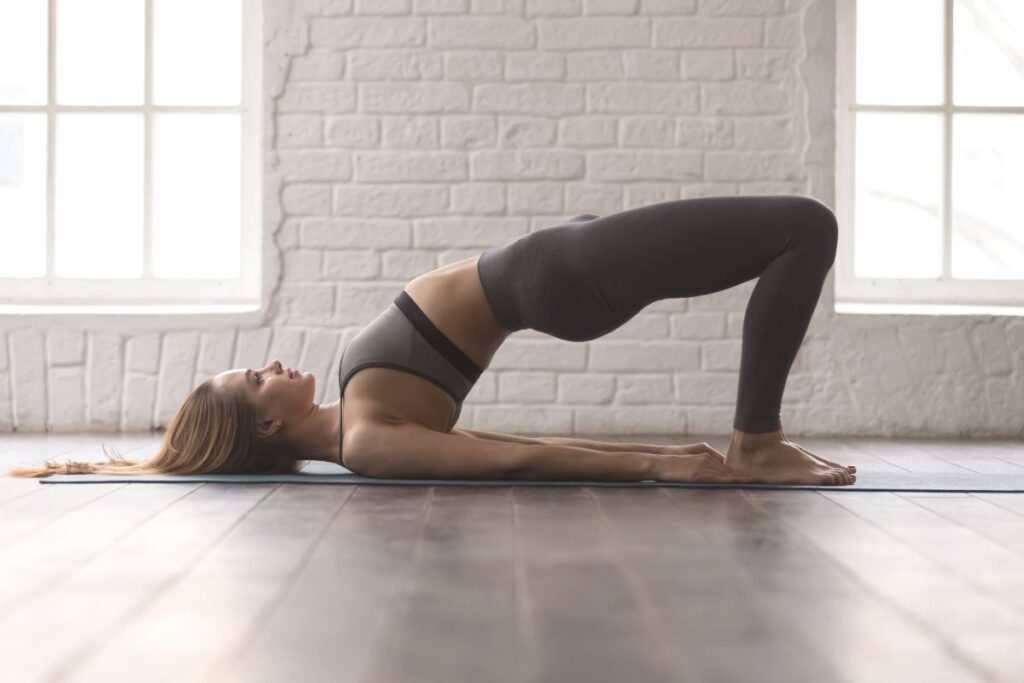
Start on the back, soles of the feet to the floor under the knees hip distance apart. Arms alongside the body, palms down, tuck the chin slightly so the neck is long. Tuck the tailbone slightly so the low back moves toward the floor. Press the feet into the ground and lift the hips up. Two options: hold, or move in and out of the pose with your breath.
*Notes – there is no right or wrong way to breathe with this pose. The most important thing is to breathe and move mindfully.
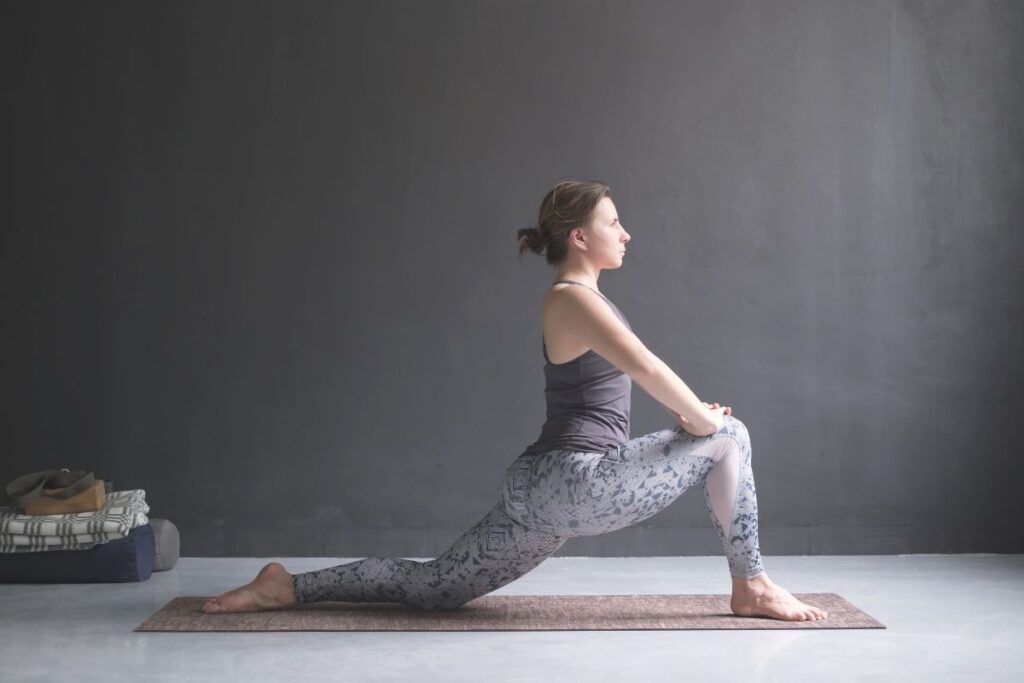
Start with one foot on the ground with the knee bent and the opposite knee on the ground under (or behind) the hips. Back toes can be pointed or curled under. Hands on either side of the front leg, use blocks to bring the floor up to you. Hold for a few breaths.
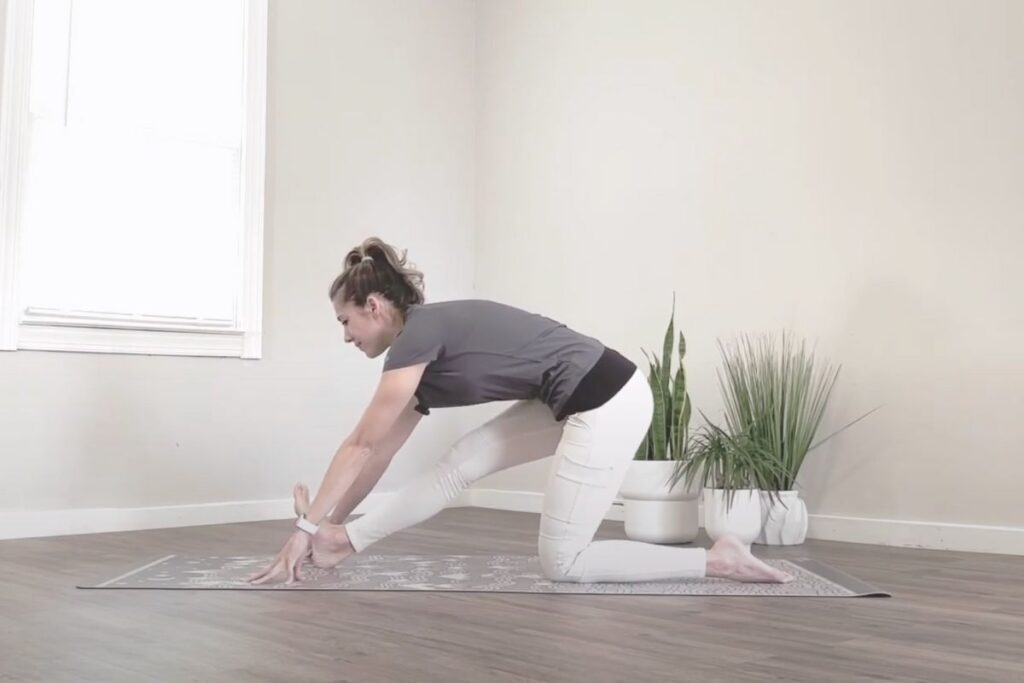
Lean back so the hips are over the back knee as the front leg straightens. Move the hands as needed. Front toes can be pointed or flexed. Hold for a few breaths.
Move between the two shapes a few times with the breath, then switch sides.
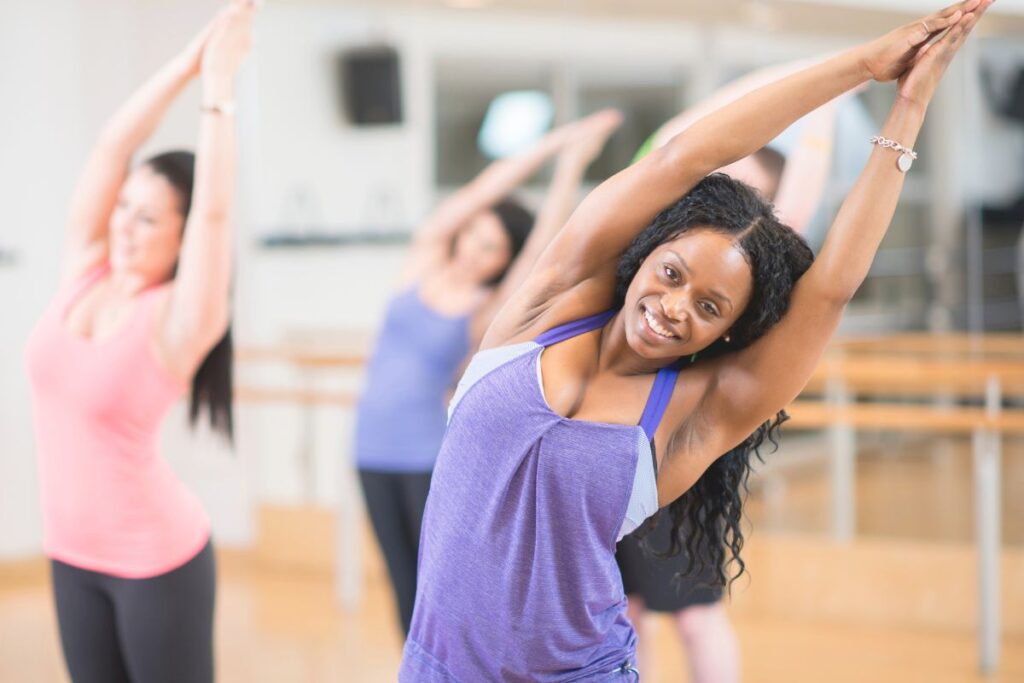
Start standing, feet together or hip distance apart. Reach the arms overhead and interlace the fingers. Tail bone points toward the floor, tops of the hips reach toward the low ribs to engage the core, lean to one side. Hold for a few breaths, then repeat on the other side.
| Anatomical Action | Muscles Stretched |
| Plantar flexion of the ankle | Anterior tibialis |
| Knee flexion | Quadriceps |
| Hip flexion | Gluteus maximus, medius, minimus |
| Spinal flexion | Erector spinae, Quadrtaus lumborum (QL) |
| Shoulder flexion (if arms are out front) | Latisimus dorsis, posterior deltoid |
| Anatomical Action | Muscles Stretched |
| Spinal extension | Rectus abdominis |
| Spinal flexion | Erector spinae, Quadrtaus lumborum (QL), Rhomboids, Middle trapezius |
| Hip flexion | Gluteus maximus, medius, minimus |
| Lateral bend | Internal and external obliques |
| Dorsi flexion | Gastrocnemius and Soleus |
| Anatomical Action | Muscles Stretched |
| Shoulder abduction and retraction (while lifting arm up) | Pectoralis major, pectoralis minor, Anterior deltoid |
| Shoulder adduction and protraction (when arm is under) | Rhomboid, Middle trapezius, Posterior deltoid |
| Lateral neck movement | Scalenes, Levator Scapulae, Sternocleidomastenoid, Upper trapezius |
| Lateral bend | Obliques |
| Anatomical Action | Muscles Stretched |
| Shoulder flexion | Latisimus dorsi, Posterior deltoid |
| Spinal extension | Rectus abdominis |
| Anatomical Action | Muscles Stretched |
| Plantar flexion of the ankle | Anterior tibialis |
| Hip extension | Psoas |
| Spinal extension | Rectus abdominis |
| Shoulder retraction/depresion & shoulder abduction | Pectoralis major, pectoralis minor, Anterior deltoid |
| Anatomical Action | Muscles Stretched |
| Shoulder abduction | Pectoralis major, pectoralis minor, Anterior deltoid |
| Anatomical Action | Muscles Stretched |
| Shoulder adduction and external rotation | Rhomboid, Middle trapezius, Posterior deltoid |
| Anatomical Action | Muscles Stretched |
| Spinal twist | Internal and external obliques, Erector spinae, Quadrtaus lumborum |
| Shoulder abduction | Pectoralis major, Pectoralis minor, Anterior deltoid |
| Cervical spine rotation | Scalenes, Levator Scapulae, Sternocleidomastenoid |
| Anatomical Action | Muscles Stretched |
| Hip extension | Psoas |
| Neck flexion | Upper trapezius |
| Anatomical Action | Muscles Stretched |
| Plantar flexion of the ankle | Anterior tibialis |
| Knee flexion | Quadriceps |
| Hip flexion | Gluteus maximus, medius, minimus |
| Dorsi flexion | Gastrocnemius and Soleus |
| Knee extension | Hamstrings |
| Anatomical Action | Muscles Stretched |
| Shoulder flexion | Latisimus dorsis, posterior deltoid, pectoralis minor |
| Lateral bend | Internal and external obliques, Erector spinae, Quadrtaus lumborum |
Q: How do I start a morning yoga practice?
A: Just start. Now. Click here to watch the video and follow along.
Q: What’s the best way to start a daily yoga practice?
A: Start by eliminating the expectations. Does your practice..
Have to be an hour long?
Be on a yoga mat?
Before or after breakfast?
Power yoga?
Have savasana?
Have meditation?
None of these are true for everyone. Do what works for you. I know some of you might get hot under the collar about not doing savasana, but I ask this “Is it better to not do any mindful movement because you are not able/don’t have time/don’t want to do savasana?” Yoga IS a moving meditation, and any form of movement or mindfulness is better than none at all (every yoga study with a control group of “wait list” proves this).
Q: When should you practice?
A: Whenever you can. I like to start my day with some morning yoga. I find a few minutes in the morning right when I roll out of bed is the best time for me since my morning routine is pretty standard. You can practice before or after breakfast. Do what works for you. But if your bedtime routine, when you get home from work routine, or lunch routine is standard for you, try adding a few mindful movements at that time.
Q: How much time should I practice every day?
A: As much time as you can dedicate and feel is enough. It might be 10 minutes, 15 minutes, or it might only be 2 minutes. Anything is better than nothing, and routine is better than inconsistency.
Q: What yoga poses are the best to do?
A: Find a balance of yoga poses to stretch the whole body and work on the areas you need improvement. The poses may change over time, or daily. Start with the poses in this video and build/change from there.
With everything, nothing works unless you do it. The same applies to yoga. Start by doing something that works for you and when it works for you. As you develop a routine and a habit you can add or change what you’re currently doing.
For more tips and tricks on how to find your best self and live pain-free sign up for my newsletter.
Sign up for my newsletter and get my 1 min checklist to reduce stress, anxiety, and pain + guided audio.
Privacy is important. I won’t sell your info. I promise.